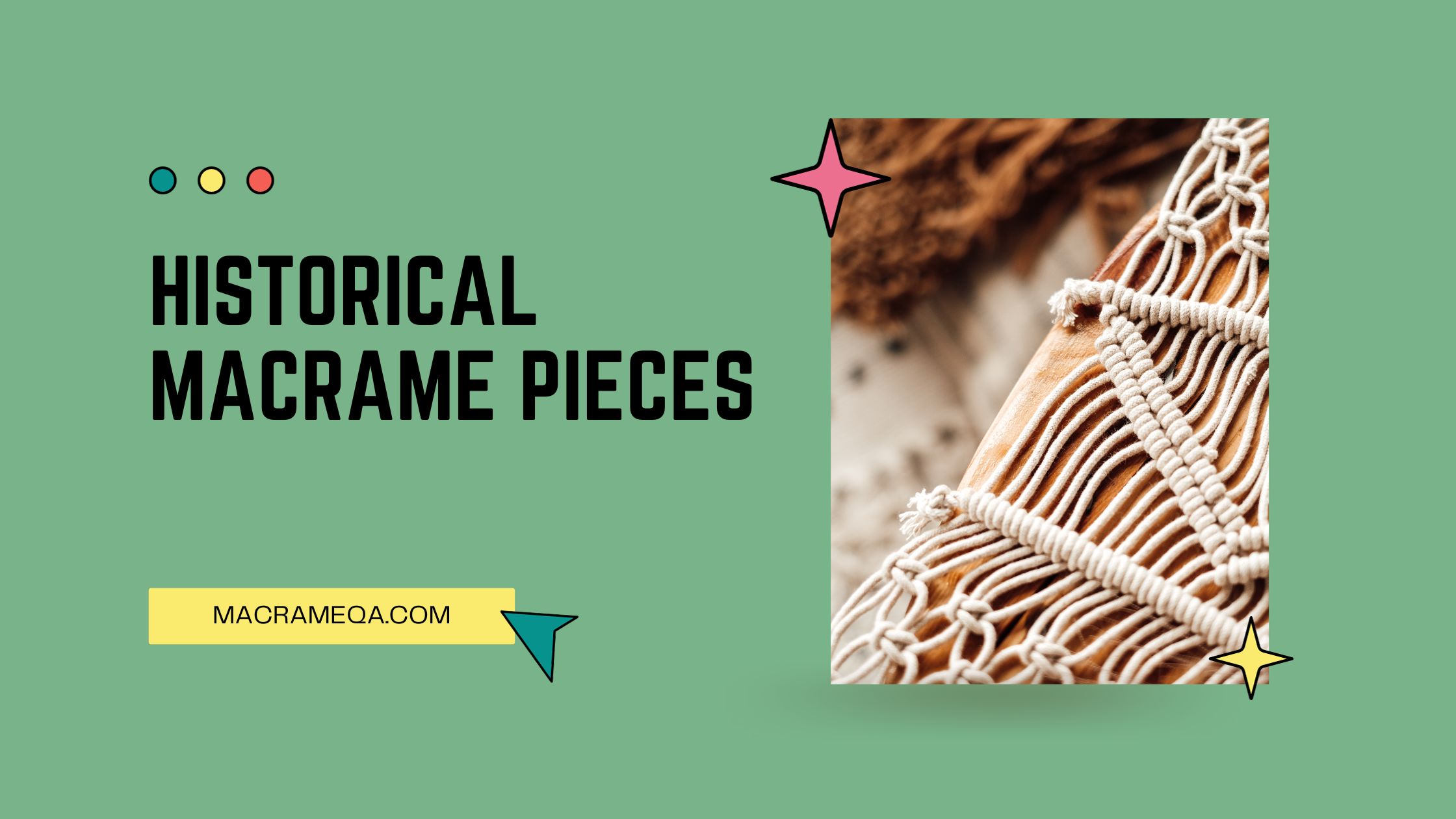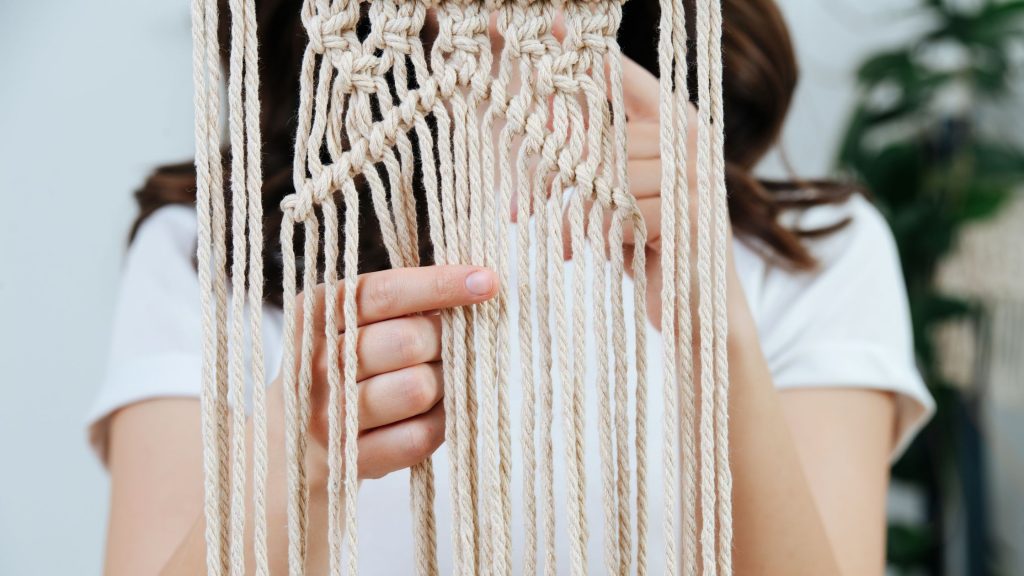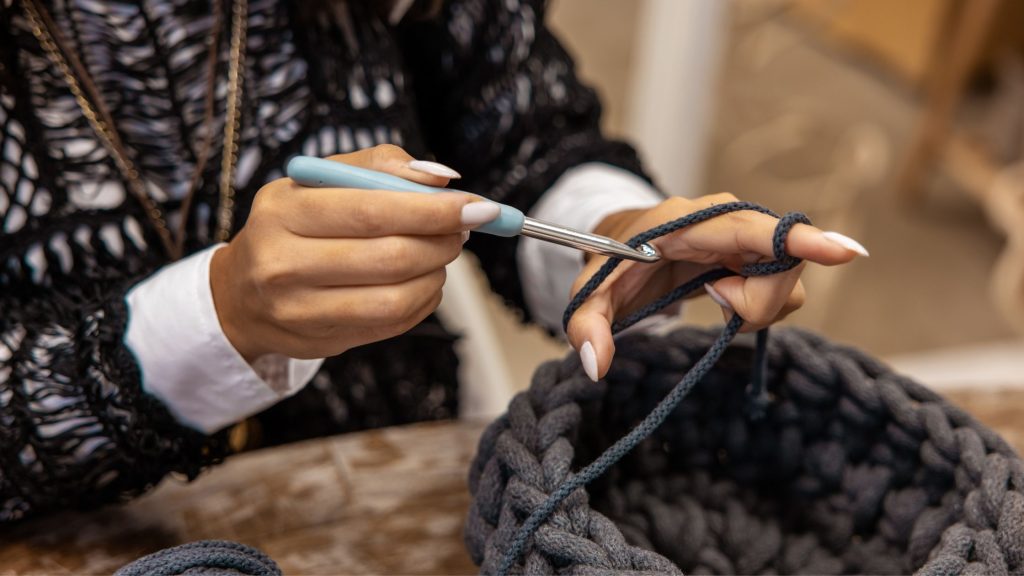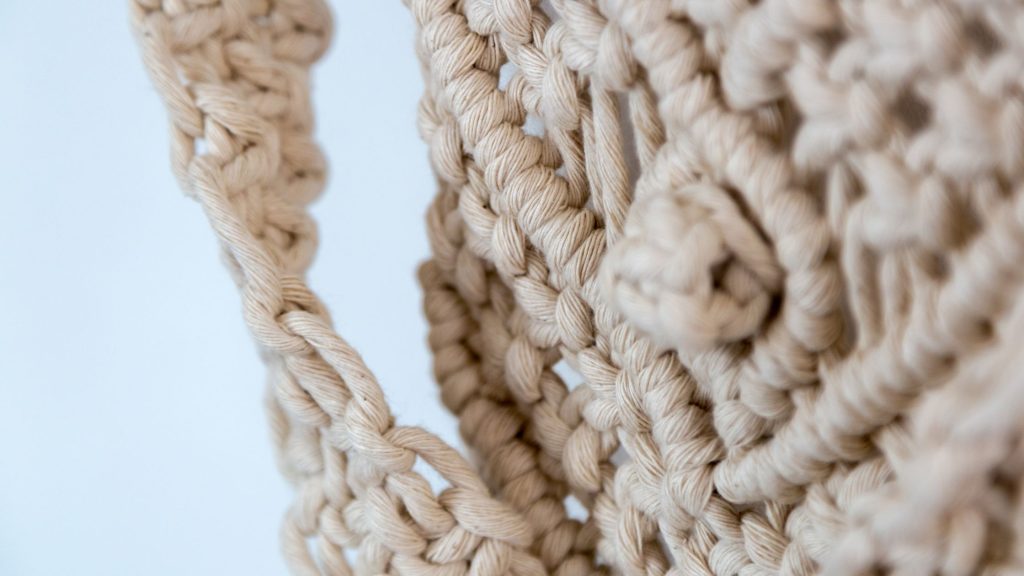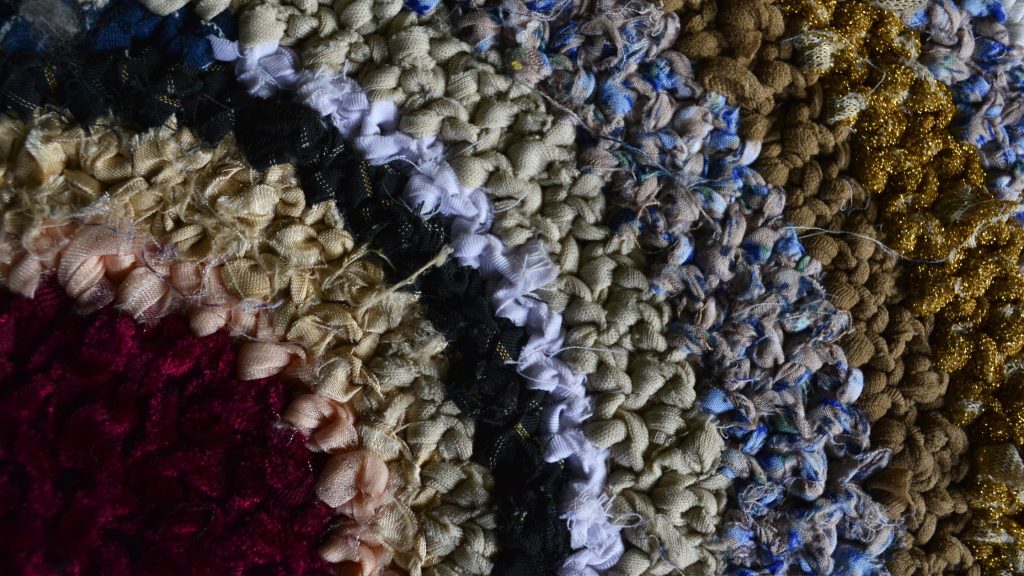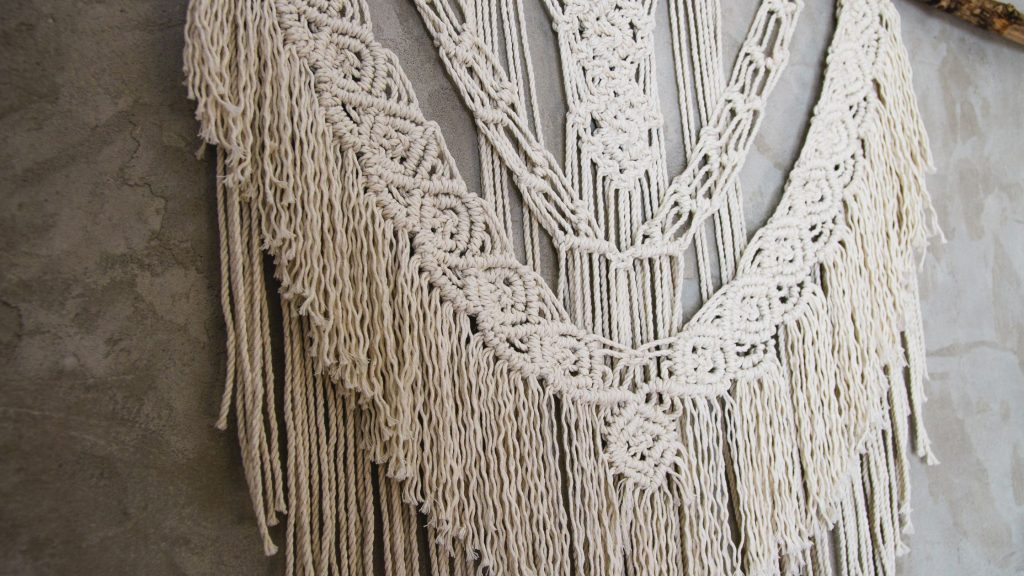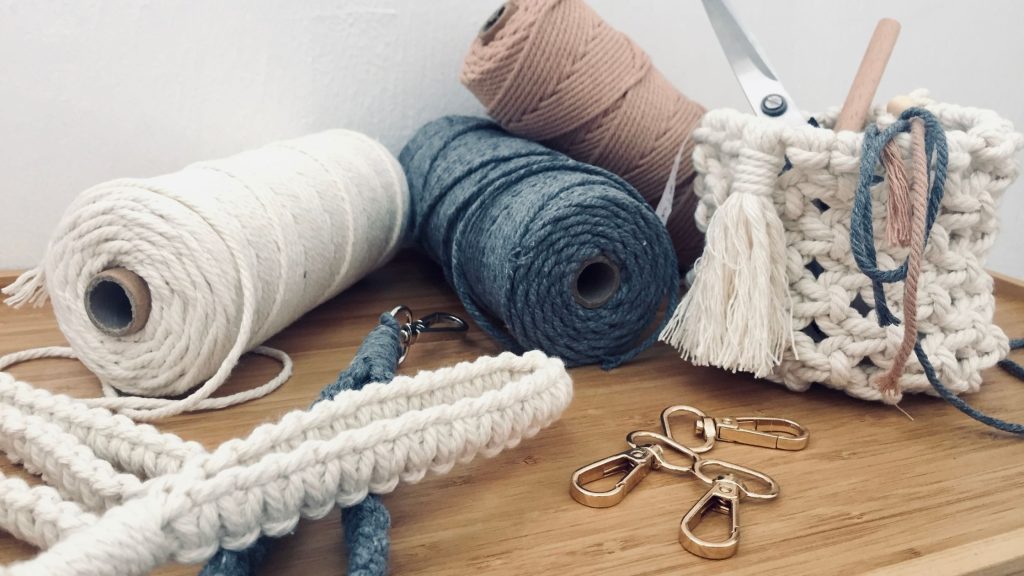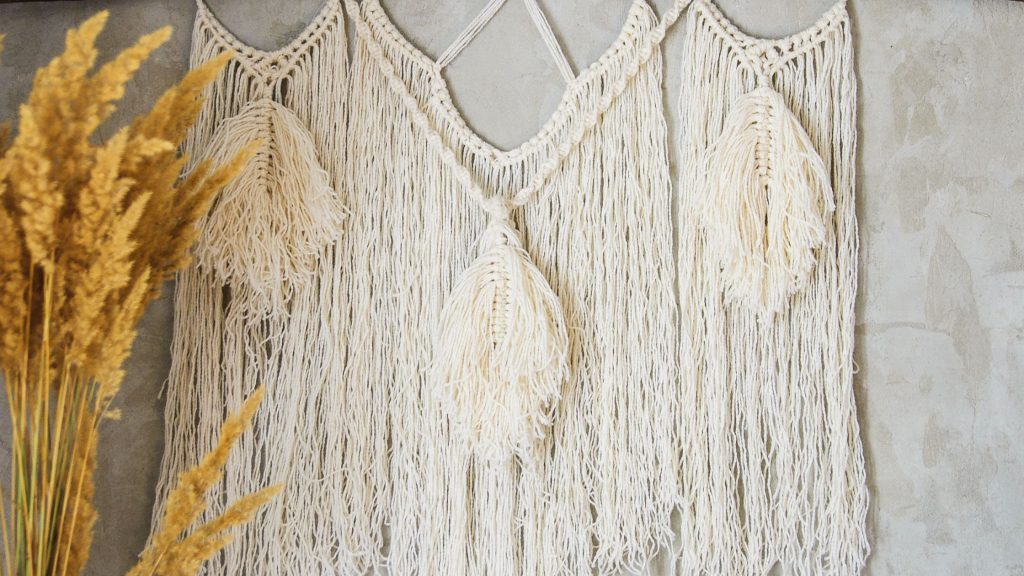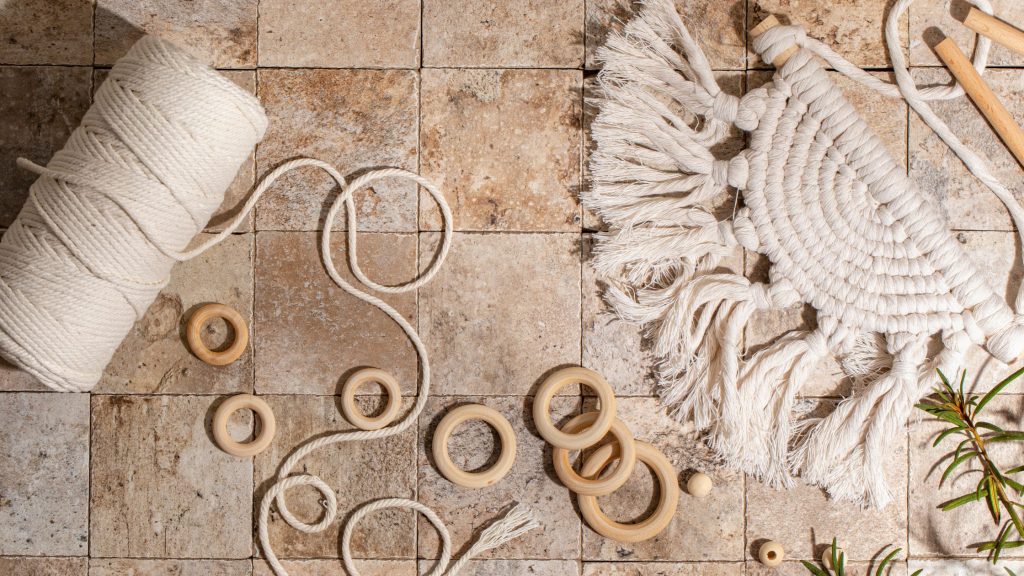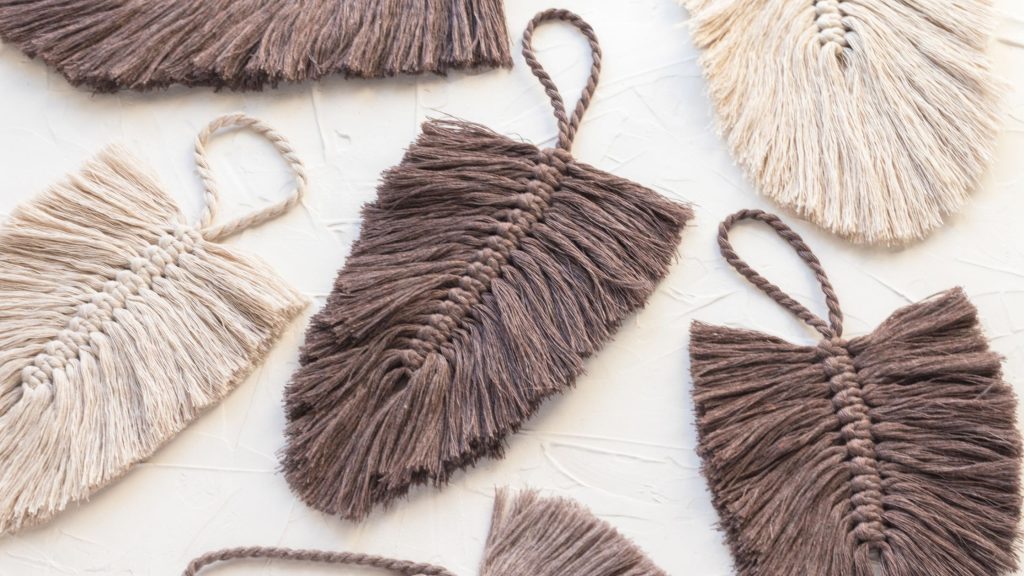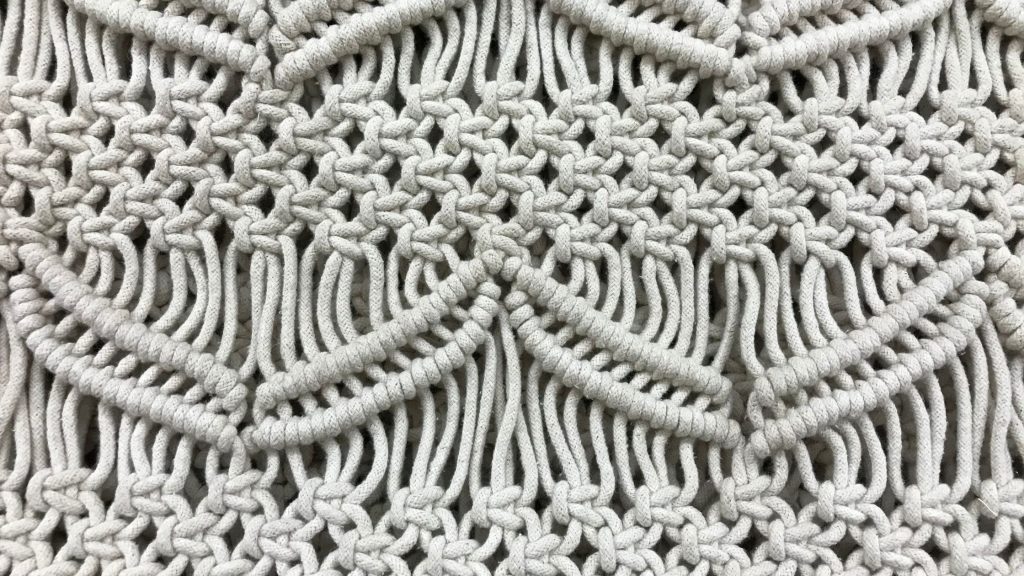Macrame artistry has a rich history, spanning centuries and continents. From intricate wall hangings to delicate jewelry, the art of macrame has captivated creative minds and fascinated collectors worldwide. But among the vast array of macrame pieces, which hold the most value? In this article, we will explore the world of historical macrame and unveil some of the most cherished and valuable pieces that have stood the test of time. So, join us as we unravel the secrets of these treasured macrame artifacts.
Different Types of Macrame Pieces
Macrame is a beautiful and versatile art form that can be used to create a wide variety of pieces. Whether you’re looking to decorate your home, express your personal style through jewelry, or add a touch of elegance to your table, there’s a macrame piece for you.
Wall Hangings
One of the most popular types of macrame pieces is wall hangings. These intricate and intricate designs are perfect for adding a bohemian touch to any room. Whether you prefer a large and statement-making piece or a smaller and more delicate design, there are countless options to choose from.
Plant Hangers
Another popular use for macrame is in the creation of plant hangers. These beautiful pieces not only showcase your favorite plants in a unique and eye-catching way but also add a touch of natural beauty to your home. Whether you have one plant or a collection of them, macrame plant hangers are a stylish way to display and care for your green friends.
Jewelry
Macrame is not limited to home decor. It can also be used to create stunning pieces of jewelry. From bracelets and necklaces to earrings and anklets, the possibilities are endless. Macrame jewelry allows you to express your personal style and add a unique and handmade touch to your accessories collection.
Curtains
If you’re looking to add some elegance and charm to your windows, macrame curtains are the perfect choice. These intricate designs create a beautiful play of light and shadow and can transform any space into a cozy and inviting one. Whether you prefer a simple and minimalist design or a more elaborate and detailed one, macrame curtains are sure to make a statement.
Tablecloths
Macrame tablecloths are another stunning way to incorporate this art form into your home decor. These beautiful pieces can elevate any dining experience and add a touch of sophistication to your table. Whether you’re hosting a formal dinner party or enjoying a casual meal with family and friends, a macrame tablecloth is sure to impress.
Macrame Pieces from Ancient Civilizations
Macrame has a rich history that dates back thousands of years. Many ancient civilizations, including the Egyptians, Babylonians, and Chinese, incorporated macrame into their cultures and created beautiful and intricate pieces.
Ancient Egyptian Macrame
The ancient Egyptians were known for their advanced weaving techniques, and macrame was no exception. Macrame was used to create various types of jewelry, including necklaces, bracelets, and earrings. These pieces were often adorned with precious stones and beads and were worn by both men and women as a symbol of wealth and status.
Babylonian Macrame
The Babylonians were skilled artisans and used macrame to create elaborate and detailed pieces. They used a variety of knots and weaving techniques to create everything from clothing and accessories to decorative wall hangings. These macrame pieces were often made with beautifully dyed fibers and showcased the artistic prowess of the Babylonian people.
Chinese Macrame
Macrame has a long history in China and was used for both practical and decorative purposes. The Chinese often used macrame to create intricate nets and bags that were used for fishing and carrying items. These macrame bags were not only functional but also served as a form of artistic expression, with intricate patterns and designs.
Macrame as Decor during Medieval Times
During the Medieval period, macrame was used extensively as decorative elements in both castles and churches.
Macrame in Castles and Palaces
Macrame was frequently used in medieval castles and palaces as a way to add beauty and elegance to the interiors. Elaborate wall hangings made with macrame techniques were often displayed in grand halls and reception rooms, showcasing the wealth and taste of the nobility. These intricate pieces were carefully crafted using a variety of knots and weaving techniques and often adorned with pearls and other precious materials.
Macrame in Churches and Cathedrals
In addition to its use in castles, macrame was also a popular decorative element in churches and cathedrals during the Medieval period. Intricate macrame designs could be found on altar cloths, tapestries, and even the clothing worn by clergy members. These macrame pieces added a touch of splendor and reverence to religious spaces and were often crafted with great care and attention to detail.
Macrame during the Victorian Era
The Victorian era saw a resurgence in the popularity of macrame, particularly in home decor.
Grand Macrame Curtains
During the Victorian era, grand macrame curtains became a staple in many affluent homes. These curtains were often made with intricate lace-like patterns and were used to add a touch of elegance and sophistication to windows and doorways. They were painstakingly crafted using delicate macrame techniques and were highly prized for their beauty and craftsmanship.
Macrame Bed Canopies
Another popular use of macrame during the Victorian era was in the creation of bed canopies. These canopies were typically made with long, flowing macrame panels that draped gracefully over the bed, creating a romantic and dreamy atmosphere. Macrame bed canopies were often adorned with delicate lace and ribbon, adding to their ethereal beauty.
Macrame Clothing Accessories
The Victorians also incorporated macrame into their clothing accessories. Macrame collars, cuffs, and trimmings were popular adornments for women’s dresses and blouses. These intricate macrame pieces added a touch of femininity and intricacy to Victorian fashion and were often crafted with great skill and attention to detail.
Macrame in Indigenous Cultures
Macrame has a long history in indigenous cultures around the world.
Native American Macrame
Native American tribes have been creating macrame pieces for centuries. Macrame was often used to create practical items such as bags, belts, and sandals, as well as decorative pieces like wall hangings and dream catchers. The intricate knotwork and patterns used in Native American macrame are unique to each tribe and often hold special cultural and spiritual significance.
Maori Macrame
The Maori people of New Zealand have a rich tradition of macrame. They have been using macrame techniques to create woven elements in their traditional flax weavings for generations. Macrame is used to create intricate patterns and designs in Maori cloaks, baskets, and other garments, adding a unique and distinctive touch to their cultural heritage.
African Macrame
Macrame has also been used by various African cultures for centuries. In countries such as Cameroon and Nigeria, macrame is used to create stunning jewelry pieces, including bracelets, necklaces, and earrings. These jewelry pieces are often made with colorful beads and shells and are treasured not only for their beauty but also for their cultural significance.
Macrame in the Arts and Crafts Movement
In the late 19th and early 20th centuries, the Arts and Crafts Movement brought about a revival of macrame as a decorative art form.
William Morris and the Macrame Revival
William Morris, a leading figure in the Arts and Crafts Movement, played a significant role in the revival of macrame. He believed in the importance of handcrafted art and sought to bring beauty and quality back to everyday objects. Morris incorporated macrame into his designs, creating intricate wall hangings and textiles that showcased the versatility and beauty of this art form.
Macrame in Arts and Crafts Homes
The Arts and Crafts Movement also popularized the use of macrame in home decor. Macrame curtains, table runners, and cushions became popular additions to Arts and Crafts-style homes, adding a touch of handmade beauty to these spaces. Macrame was often paired with other handcrafted elements such as stained glass windows and hand-carved furniture, creating a cohesive and artistic interior design.
Macrame in Modern Design
Macrame continues to be a popular art form in modern design, with contemporary artists pushing the boundaries of this craft.
Macrame in Mid-Century Modern
During the mid-20th century, macrame experienced a resurgence in popularity as part of the Mid-Century Modern design movement. Macrame wall hangings, plant hangers, and room dividers became popular features in homes, adding a bohemian and eclectic touch to the minimalist aesthetic of the era. Macrame was often made with bold and vibrant colors, creating a striking contrast against the clean lines and neutral tones of Mid-Century Modern furniture and decor.
Contemporary Macrame Artists
Today, there is a thriving community of contemporary macrame artists who continue to push the boundaries of this art form. From large-scale installations to delicate jewelry pieces, these artists use macrame to create stunning and innovative designs. By experimenting with new materials, techniques, and styles, they keep the art of macrame alive and relevant in the modern world.
Historical Macrame Techniques and Materials
Throughout history, macrame techniques and materials have evolved and been influenced by various cultures and traditions.
Early Macrame Knots and Techniques
Early macrame pieces were often created using basic knotting techniques. The most common knots used in macrame include the square knot, the half-hitch knot, and the clove hitch. These knots can be combined and manipulated to create a wide variety of patterns and designs, allowing for endless creative possibilities.
Influence of Cultural Traditions on Macrame
Macrame has been heavily influenced by the cultural traditions of various civilizations. From the intricate knotwork of the Egyptians to the bold and vibrant colors of African macrame, each culture has brought its unique style and techniques to the art of macrame. These cultural influences have not only shaped the appearance of macrame pieces but also imbued them with deeper meanings and symbolism.
Historical Macrame Materials
The choice of materials used in macrame has varied throughout history. In ancient times, natural fibers such as cotton, linen, and silk were commonly used. These fibers were often dyed using natural pigments to create vibrant colors. In more recent history, synthetic materials such as nylon and polyester have become popular due to their durability and affordability. However, there is a growing trend towards using sustainable materials such as organic cotton and hemp, as well as upcycled fibers and recycled materials, to create environmentally friendly macrame pieces.
Famous Historical Macrame Pieces
Over the centuries, there have been several famous macrame pieces that have captured the attention and admiration of art enthusiasts worldwide.
The Lovers’ Knot Macrame
One notable macrame piece is the Lovers’ Knot macrame. This intricate design features two intertwining loops that symbolize eternal love and unity. The Lovers’ Knot macrame has been used in various contexts, from jewelry to wall hangings, and continues to be a popular choice for those looking to express their deepest emotions through art.
The Mary May Macrame Dress
Another famous macrame piece is the Mary May macrame dress. Created in the early 20th century, this stunning dress features delicate macrame lace panels intricately woven together. The dress became a symbol of sophistication and elegance and was often worn by fashion-forward women at high society events.
The Macrame Tapestry of Bayeux
The Macrame Tapestry of Bayeux is an iconic work of art that depicts the events leading up to the Norman conquest of England in 1066. This monumental tapestry is intricately woven using macrame techniques and is considered one of the most important historical artifacts of its kind. The tapestry tells a compelling story through its detailed and lifelike depictions, showcasing the skill and talent of the macrame artisans who created it.
Preserving and Valuing Historical Macrame
Preserving and valuing historical macrame pieces is essential to ensure that this rich and beautiful art form continues to be appreciated for generations to come.
The Role of Museums
Museums play a vital role in preserving and showcasing historical macrame pieces. They provide a safe and controlled environment for these delicate works of art, protecting them from damage and deterioration. Museums also educate the public about the significance and cultural importance of macrame, allowing visitors to learn and appreciate the skill and craftsmanship involved in creating these pieces.
Collecting and Appraising Macrame
Collectors and appraisers also play a crucial role in valuing historical macrame. By acquiring and preserving these pieces, collectors contribute to the ongoing appreciation and understanding of macrame as an art form. Appraisers help determine the value of macrame pieces based on factors such as age, condition, rarity, and historical significance, ensuring that these works of art are recognized and respected.
Authenticating Historical Macrame
Authenticating historical macrame can be a challenging task, as many pieces may have been altered or repaired over the years. However, experts in macrame can analyze the techniques, materials, and designs used in a piece to determine its authenticity. By properly documenting and cataloging historical macrame, we can ensure that its cultural and historical significance is preserved and celebrated.
Conclusion
In conclusion, macrame is a versatile and timeless art form that has been cherished by various cultures throughout history. From ancient civilizations to modern design, macrame has continued to evolve and captivate the hearts of art enthusiasts worldwide. By understanding and appreciating the different types of macrame pieces, the historical significance of macrame in various cultures, and the techniques and materials used throughout history, we can ensure that this beautiful art form continues to be treasured for generations to come.

